The global flavours Market is expected to grow from USD 28 billion in 2020 to USD 42 billion by 2028, at a CAGR of 5.2% during the forecast period 2021-2028.
The sensory impression of food or other things is called flavour, and the stimuli and sensory system primarily influence it. The "trigeminal senses," which detect chemical irritants in the mouth and throat, as well as warmth and texture, are also crucial to taste perception's widespread phenomenon. Food flavour are altered either naturally or artificially. Flavourings are not intended to be consumed but are added to food and other things to impart or modify scent and taste. A "flavorant" a substance that imparts flavour to another material by changing the solute's properties, making it sweet, sour, tangy, and so on.
The factors driving the market are changing the lifestyle of customer and increasing health awareness. Natural flavours are becoming more popular as people become more health-conscious. Increasing consumer knowledge of the benefits of natural ingredients, rising demand for processed foods and beverages containing natural flavours are driving the market. The factors restraining the market growth are strict norms and regulation and high production cost of flavours. The flavouring sector is under a legal responsibility to follow different regulations and norms imposed by regulatory affairs in order to preserve good flavour quality. An increase in demand for processed food & beverages is expected to provide market growth opportunities.
This study delivers a comprehensive analysis of type, application, and region. The type segment includes natural, nature identical, and artificial. The natural segment held the largest market share in the year 2020, owing to the increasing health and wellness issues. Unlike synthetic products, natural extracts from various plants and flowers which provide ethnicity. Various industries manufacturing products like bakery, chocolate, confectionery, ice cream, and other packaged food significantly adopt natural flavours. The application segment includes beverages, dairy & frozen desserts, savouries & snacks, and bakery & confectionery products. In application segment the beverages segment held the largest market share in the year 2020, owing to the rising consumption of flavoured beverages such as milk, canned juices, flavoured beer, energy drinks and other beverages.
The market has been divided into Europe, Asia-Pacific, North America, Middle East & Africa, and South America. Europe held the largest market share in the year 2020, owing to the rising demand for organic products and clean-label products in the region. Natural food ingredients, including natural flavours, are used in one out of every three new products launched in the United Kingdom. The use of natural flavours in beverages and the bakery and confectionery business has decreased synthetic food flavours in France's food and beverage industry. Followed by Europe, Asia-Pacific is expected to grow at a significant growth rate, owing to the increasing consumption of various flavoured ready-to-eat/drink items. Due to an increase in the number of working women and a busy lifestyle, consumption of packaged food/drinks has increased. Also, consumption of confectionery products and baked products containing various flavors is rising.
Some of the key players in the flavours market are Dohler Group, AGRANA Group, Nelixia, Kerry Group plc, Archer Daniels Midland Company, SVZ International B.V., Mane Group, Firmenich SA, SunOpta Inc., Givaudan SA, and symrise AG among others.
In the year 2020, Symrise AG announced the partnership with the KitchenTown Berlin, a culinary and food tech innovation network, to transform the food product line and meet the growing demand of the target market.
Global Flavours Market Analysis and Forecast, by Type
Global Flavours Market Analysis and Forecast, by Application
Global Flavours Market Analysis and Forecast, by Region
Report Description:
1. Introduction
1.1. Objectives of the Study
1.2. Market Definition
1.3. Research Scope
1.4. Currency
1.5. Key Target Audience
2. Research Methodology and Assumptions
3. Executive Summary
4. Premium Insights
4.1. Porter’s Five Forces Analysis
4.2. Value Chain Analysis
4.3. Top Investment Pockets
4.3.1. Market Attractiveness Analysis By Type
4.3.2. Market Attractiveness Analysis By Application
4.3.3. Market Attractiveness Analysis By Region
4.4. Industry Trends
5. Market Dynamics
5.1. Market Evaluation
5.2. Drivers
5.2.1. Changing lifestyle of customer
5.2.2. Increasing consumer health awareness
5.3. Restrains
5.3.1. High production cost of natural flavors
5.3.2. strict norms and regulation
5.4. Opportunities
5.4.1. Advanced Technology in Flavouring industry
6. Global Flavours Market Analysis and Forecast, By Type
6.1. Segment Overview
6.2. Natural
6.3. Nature identical
6.4. Artificial
7. Global Flavours Market Analysis and Forecast, By Application
7.1. Segment Overview
7.2. Beverages
7.3. Dairy & Frozen Desserts
7.4. Savouries & Snacks
7.5. Bakery & Confectionery Products
7.6. Others
8. Global Flavours Market Analysis and Forecast, By Regional Analysis
8.1. Segment Overview
8.2. North America
8.2.1. U.S.
8.2.2. Canada
8.2.3. Mexico
8.3. Europe
8.3.1. Germany
8.3.2. France
8.3.3. U.K.
8.3.4. Italy
8.3.5. Spain
8.4. Asia-Pacific
8.4.1. Japan
8.4.2. China
8.4.3. India
8.5. South America
8.5.1. Brazil
8.6. Middle East and Africa
8.6.1. UAE
8.6.2. South Africa
9. Global Flavours Market-Competitive Landscape
9.1. Overview
9.2. Market Share of Key Players in Global Flavours Market
9.2.1. Global Company Market Share
9.2.2. North America Company Market Share
9.2.3. Europe Company Market Share
9.2.4. APAC Company Market Share
9.3. Competitive Situations and Trends
9.3.1. Product Launches and Developments
9.3.2. Partnerships, Collaborations, and Agreements
9.3.3. Mergers & Acquisitions
9.3.4. Expansions
10. Company Profiles
10.1. Dohler Group
10.1.1. Business Overview
10.1.2. Company Snapshot
10.1.3. Company Market Share Analysis
10.1.4. Company Product Portfolio
10.1.5. Recent Developments
10.1.6. SWOT Analysis
10.2. AGRANA Group
10.2.1. Business Overview
10.2.2. Company Snapshot
10.2.3. Company Market Share Analysis
10.2.4. Company Product Portfolio
10.2.5. Recent Developments
10.2.6. SWOT Analysis
10.3. Nelixia
10.3.1. Business Overview
10.3.2. Company Snapshot
10.3.3. Company Market Share Analysis
10.3.4. Company Product Portfolio
10.3.5. Recent Developments
10.3.6. SWOT Analysis
10.4. Kerry Group plc
10.4.1. Business Overview
10.4.2. Company Snapshot
10.4.3. Company Market Share Analysis
10.4.4. Company Product Portfolio
10.4.5. Recent Developments
10.4.6. SWOT Analysis
10.5. Archer Daniels Midland Company
10.5.1. Business Overview
10.5.2. Company Snapshot
10.5.3. Company Market Share Analysis
10.5.4. Company Product Portfolio
10.5.5. Recent Developments
10.5.6. SWOT Analysis
10.6. SVZ International B.V.
10.6.1. Business Overview
10.6.2. Company Snapshot
10.6.3. Company Market Share Analysis
10.6.4. Company Product Portfolio
10.6.5. Recent Developments
10.6.6. SWOT Analysis
10.7. Mane Group
10.7.1. Business Overview
10.7.2. Company Snapshot
10.7.3. Company Market Share Analysis
10.7.4. Company Product Portfolio
10.7.5. Recent Developments
10.7.6. SWOT Analysis
10.8. Firmenich SA
10.8.1. Business Overview
10.8.2. Company Snapshot
10.8.3. Company Market Share Analysis
10.8.4. Company Product Portfolio
10.8.5. Recent Developments
10.8.6. SWOT Analysis
10.9. SunOpta Inc.
10.9.1. Business Overview
10.9.2. Company Snapshot
10.9.3. Company Market Share Analysis
10.9.4. Company Product Portfolio
10.9.5. Recent Developments
10.9.6. SWOT Analysis
10.10. Givaudan SA
10.10.1. Business Overview
10.10.2. Company Snapshot
10.10.3. Company Market Share Analysis
10.10.4. Company Product Portfolio
10.10.5. Recent Developments
10.10.6. SWOT Analysis
10.11. symrise AG
10.11.1. Business Overview
10.11.2. Company Snapshot
10.11.3. Company Market Share Analysis
10.11.4. Company Product Portfolio
10.11.5. Recent Developments
10.11.6. SWOT Analysis
List of Table
1. Global Flavours Market, By Type, 2018-2028 (USD Billion)
2. Global Natural, Flavours Market, By Region, 2018-2028 (USD Billion)
3. Global Nature Identical, Flavours Market, By Region, 2018-2028 (USD Billion)
4. Global Artificial, Flavours Market, By Region, 2018-2028 (USD Billion)
5. Global Flavours Market, By Application, 2018-2028 (USD Billion)
6. Global Beverages, Flavours Market, By Region, 2018-2028 (USD Billion)
7. Global Dairy & Frozen Desserts , Flavours Market, By Region, 2018-2028 (USD Billion)
8. Global Savouries & Snacks, Flavours Market, By Region, 2018-2028 (USD Billion)
9. Global Live Bakery & Confectionery Products, Flavours Market, By Region, 2018-2028 (USD Billion)
10. North America Flavours Market, By Type, 2018-2028 (USD Billion)
11. North America Flavours Market, By Application, 2018-2028 (USD Billion)
12. U.S. Flavours Market, By Type, 2018-2028 (USD Billion)
13. U.S. Flavours Market, By Application, 2018-2028 (USD Billion)
14. Canada Flavours Market, By Type, 2018-2028 (USD Billion)
15. CanadaFlavours Market, By Application, 2018-2028 (USD Billion)
16. Mexico Flavours Market, By Type, 2018-2028 (USD Billion)
17. Mexico Flavours Market, By Application, 2018-2028 (USD Billion)
18. Europe Flavours Market, By Type, 2018-2028 (USD Billion)
19. Europe Flavours Market, By Application, 2018-2028 (USD Billion)
20. Germany Flavours Market, By Type, 2018-2028 (USD Billion)
21. Germany Flavours Market, By Application, 2018-2028 (USD Billion)
22. France Flavours Market, By Type, 2018-2028 (USD Billion)
23. France Flavours Market, By Application, 2018-2028 (USD Billion)
24. U.K. Flavours Market, By Type, 2018-2028 (USD Billion)
25. U.K. Flavours Market, By Application, 2018-2028 (USD Billion)
26. Italy Flavours Market, By Type, 2018-2028 (USD Billion)
27. Italy Flavours Market, By Application, 2018-2028 (USD Billion)
28. Spain Flavours Market, By Type, 2018-2028 (USD Billion)
29. Spain Flavours Market, By Application, 2018-2028 (USD Billion)
30. Asia Pacific Flavours Market, By Type, 2018-2028 (USD Billion)
31. Asia Pacific Flavours Market, By Application, 2018-2028 (USD Billion)
32. Japan Flavours Market, By Type, 2018-2028 (USD Billion)
33. Japan Flavours Market, By Application, 2018-2028 (USD Billion)
34. China Flavours Market, By Type, 2018-2028 (USD Billion)
35. China Flavours Market, By Application, 2018-2028 (USD Billion)
36. India Flavours Market, By Type, 2018-2028 (USD Billion)
37. India Flavours Market, By Application, 2018-2028 (USD Billion)
38. South America Flavours Market, By Type, 2018-2028 (USD Billion)
39. South America Flavours Market, By Application, 2018-2028 (USD Billion)
40. Brazil Flavours Market, By Type, 2018-2028 (USD Billion)
41. Brazil Flavours Market, By Application, 2018-2028 (USD Billion)
42. Middle East and Africa Flavours Market, By Type, 2018-2028 (USD Billion)
43. Middle East and Africa Flavours Market, By Application, 2018-2028 (USD Billion)
44. UAE Flavours Market, By Type, 2018-2028 (USD Billion)
45. UAE Flavours Market, By Application, 2018-2028 (USD Billion)
46. South Africa Flavours Market, By Type, 2018-2028 (USD Billion)
47. South Africa Flavours Market, By Application, 2018-2028 (USD Billion)
List of Figures
1. Global Flavours Market Segmentation
2. Global Flavours Market: Research Methodology
3. Market Size Estimation Methodology: Bottom-Up Approach
4. Market Size Estimation Methodology: Top-Down Approach
5. Data Triangulation
6. Porter’s Five Forces Analysis
7. Value Chain Analysis
8. Global Flavours Market Attractiveness Analysis By Type
9. Global Flavours Market Attractiveness Analysis By Application
10. Global Flavours Market Attractiveness Analysis By Region
11. Global Flavours Market: Dynamics
12. Global Flavours Market Share by Type(2021 & 2028)
13. Global Flavours Market Share By Application (2021 & 2028)
14. Global Flavours Market Share by Regions (2021 & 2028)
15. Global Flavours Market Share by Company (2020)
Market research is a method of gathering, assessing and deducing data & information about a particular market. Market research is very crucial in these days. The techniques analyze about how a product/service can be offered to the market to its end-customers, observe the impact of that product/service based on the past customer experiences, and cater their needs and demands. Owing to the successful business ventures, accurate, relevant and thorough information is the base for all the organizations because market research report/study offers specific market related data & information about the industry growth prospects, perspective of the existing customers, and the overall market scenario prevailed in past, ongoing present and developing future. It allows the stakeholders and investors to determine the probability of a business before committing substantial resources to the venture. Market research helps in solving the marketing issues challenges that a business will most likely face.
Market research is valuable because of the following reasons:
Our research report features both the aspects; qualitative and quantitative. Qualitative part provides insights about the market driving forces, potential opportunities, customer’s demands and requirement which in turn help the companies to come up with new strategies in order to survive in the long run competition. The quantitative segment offers the most credible information related to the industry. Based on the data gathering, we use to derive the market size and estimate their future growth prospects on the basis of global, region and country.
Our market research process involves with the four specific stages.

Data Collection: This stage of the market research process involves with the gathering and collecting of the market/industry related data from the sources. There are basically two types of research methods:
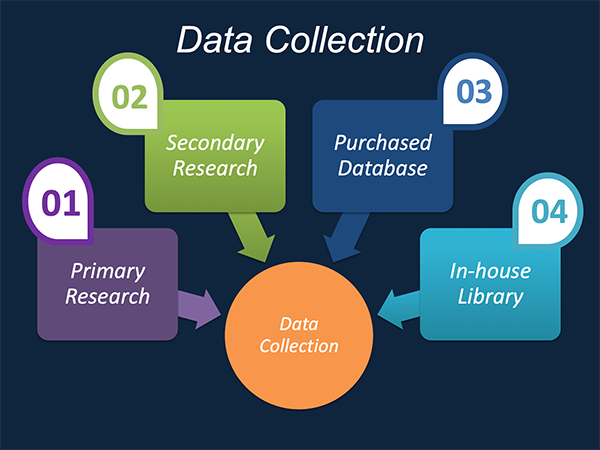
Data Synthesis: This stage includes the evaluation and assessment of all the data acquired from the primary and secondary research. It likewise includes in evaluating the information for any disparity watched while information gathering identified with the market. The data & information is gathered with consideration to the heterogeneity of sources. Scientific and statistical methods are implemented for synthesizing dissimilar information sets and provide the relevant data which is fundamental for formulating strategies. Our organization has broad involvement with information amalgamation where the information goes through different stages:


Market Formulation & Deduction: The last stage includes assigning the data & information in a suitable way in order to derive market size. Analyst reviews and domain based opinions based on holistic approach of market estimation combined with industry investigation additionally features a crucial role in this stage.
This stage includes with the finalization of the market size and numbers that we have gathered from primary and secondary research. With the data & information addition, we ensure that there is no gap in the market information. Market trend analysis is finished by our analysts by utilizing data extrapolation procedures, which give the most ideal figures to the market.
Data Validation: Validation is the most crucial step in the process. Validation & re-validation through scientifically designed technique and process that helps us finalize data-points to be used for final calculations. This stage also involves with the data triangulation process. Data triangulation generally implicates the cross validation and matching the data which has been collected from primary and secondary research methods.





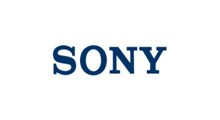

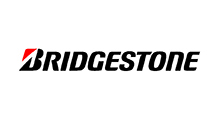

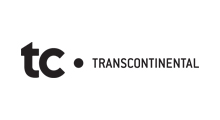















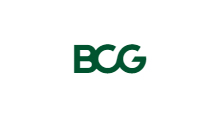


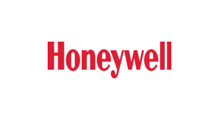

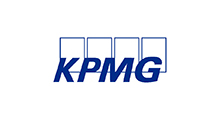
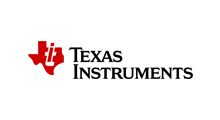



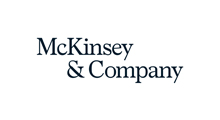

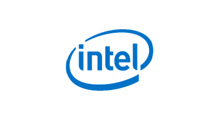







Free Customization
Countries can be added on demand
Free yearly update on purchase of Multi/Corporate User License
Companies served till date

We serve our customers 24x7 for 365 days through calls, emails and live chat options.

Huge database of exceptional market reports bringing market intelligence to your fingertips.

SSL enabled, we offer you various secured payment options for risk free purchase.